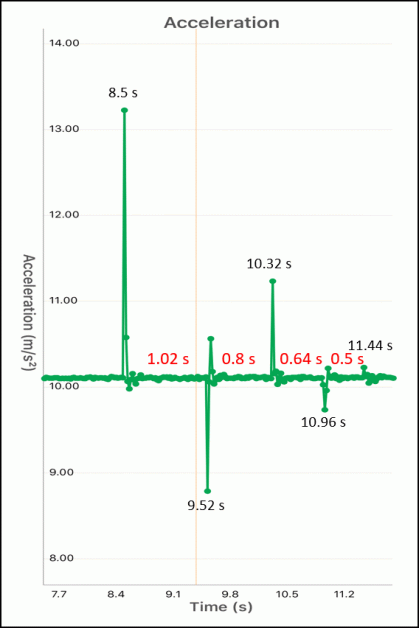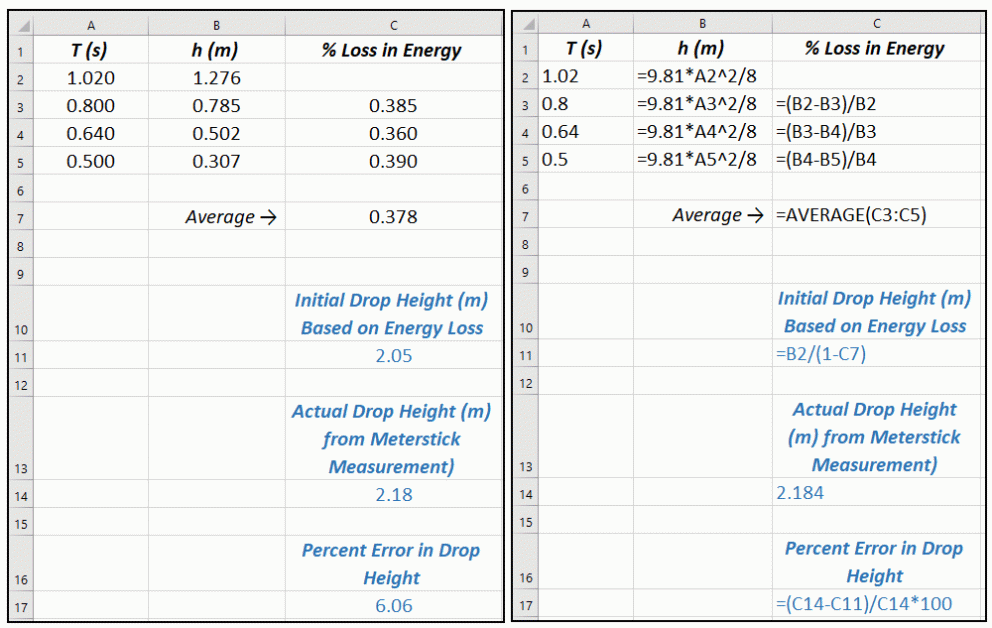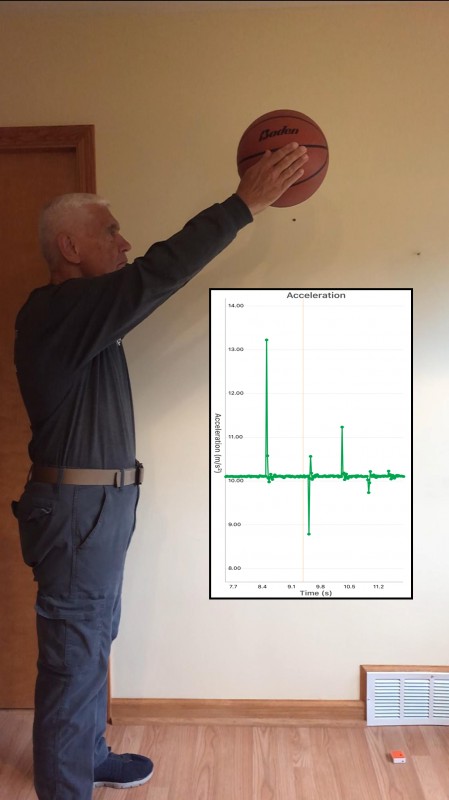The NGSS Seismic Basketball Challenge
This NGSS seismic basketball challenge fits well in the study of motion for high school physics students. Here is a statement describing the challenge:
Place PocketLab Voyager on a wood floor with accelerometer data being captured. Drop a basketball onto the floor near Voyager and let it bounce several times, being careful to not let it hit Voyager. From the recorded accelerometer data, determine the original height from which the basketball was released.
The short 11-second slow motion video below captures the seismic nature of this challenge, with amplified shaking of the camera on its tripod each time the basketball hits the wood floor. This clearly suggests that Voyager's accelerometer would be an ideal sensor for data collection in this lab.
Typical Solution to the Challenge
Student reasoning may progress as follows. The accelerometer data will provide the time when each bounce of the basketball occurs. The time between bounces can therefore be determined. With the time between bounces known, we should be able to compute the height to which the basketball rises between successive bounces. We should then able to compute the percentage loss in energy during each bounce, since height is proportional to the gravitational potential energy. If this percentage loss in energy is relatively constant for successive bounces, we should be able to extrapolate backwards and determine the original height of the basketball.
A wood floor, such as in a basketball court, is advised, as it transmits the vibrations to Voyager with sufficient magnitude to be detected by the accelerometer. It is also best to set the data rate to the maximum possible (50 points/second) to provide the highest time resolution possible. Dropping the basketball from a reasonably high height is encouraged as doing so will provide (1) seismic waves of higher acceleration, and (2) greater times between bounces. Finally, make sure that the basketball is inflated to regulation pressure. If it is underinflated, energy will be lost too quickly during each bounce.
As shown in Figure 1, the author collected accelerometer data for five bounces. By simply moving the vertical cursor line in the PocketLab app, the time for each bounce (shown in black) can be obtained. The calculated time between bounces are shown in red.

Part of this challenge is for the student to derive an equation for the height to which the basketball rises between bounces based upon the time between bounces. First, the students can show that the time between bounces is given by the equation

where h is the height to which the basketball rises, and g is the acceleration of gravity. Solving this equation for h then gives the desired equation

Figure 2 shows a spreadsheet making use of the equation above for height h and time between bounces T. Values are shown on the left, and for clarification of calculations, equations are shown on the right. The percent losses in energy are reasonably consistent, so the average loss was calculated in cell C7. A "backward" projection in cell C11 shows what the initial drop height would have been, based upon data collected from the PocketLab app. Cell C14 contains the value of the drop height obtained by direct measurement with a meter stick. Cell C16 contains the percent error when comparing the PocketLab-based value with the meter stick value. This error was approximately 6%.
As a refinement, if time permits, the basketball could be dropped several times from the same height. Average values for each of the times between bounces could be used in the analysis.


